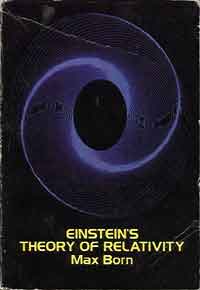 After Coulomb's law had been established, electrostatics became a mathematical science. Its most important problem is this: Given the total quantity of electricity on conducting bodies, to calculate the distribution of charges on them under the action of their mutual influence, and also the forces due to these charges. The development of this mathematical problem is interesting in that it very soon became changed from the original formulation based on the theory of action at a distance to a theory of pseudocontiguous action, that is, in place of the summations of Coulomb forces there were obtained differential equations in which the field E or a related quantity called potential occurred as the unknown. However, we cannot discuss these purely mathematical questions any further here but only mention the names of Laplace (1782), Poisson (1813), Green (1828), and Gauss (1840), who have played a prominent role in their solution. We shall emphasize only one point. In this treatment of electrostatics, which is usually called the theory of potential, we are not dealing with a true theory of contiguous action in the sense which we attached to this expression before (IV, 6, p. 108), for the differential equations refer only to the change in the intensity of field from place to place and contain no term that expresses a change in time. Hence they entail no transmission of electric force with finite velocity but, in spite of their differential form, they represent an instantaneous action at a distance.
After Coulomb's law had been established, electrostatics became a mathematical science. Its most important problem is this: Given the total quantity of electricity on conducting bodies, to calculate the distribution of charges on them under the action of their mutual influence, and also the forces due to these charges. The development of this mathematical problem is interesting in that it very soon became changed from the original formulation based on the theory of action at a distance to a theory of pseudocontiguous action, that is, in place of the summations of Coulomb forces there were obtained differential equations in which the field E or a related quantity called potential occurred as the unknown. However, we cannot discuss these purely mathematical questions any further here but only mention the names of Laplace (1782), Poisson (1813), Green (1828), and Gauss (1840), who have played a prominent role in their solution. We shall emphasize only one point. In this treatment of electrostatics, which is usually called the theory of potential, we are not dealing with a true theory of contiguous action in the sense which we attached to this expression before (IV, 6, p. 108), for the differential equations refer only to the change in the intensity of field from place to place and contain no term that expresses a change in time. Hence they entail no transmission of electric force with finite velocity but, in spite of their differential form, they represent an instantaneous action at a distance.
1 The theory of magnetism was developed in the same way as that of electrostatics. We may, therefore, express ourselves briefly.
A lozenge-shaped magnetized body, a magnet needle, has two poles, that is, points from which the magnetic force seems to start out, and the law holds that like poles repel, unlike poles attract one another. If we break a magnet in half, the two parts do not carry opposite magnetic charges, but each part shows a new pole near the new surface and again represents a complete magnet with two equal but opposite poles. This holds, no matter into how many parts the magnet be broken.
From this it has been concluded that there are indeed two kinds of magnetism as in the case of electricity except that they cannot move freely, and that they are present in the smallest particles of matter, molecules, in equal quantities, but separated by a small distance. Thus each molecule is itself a small magnet with a north and a south